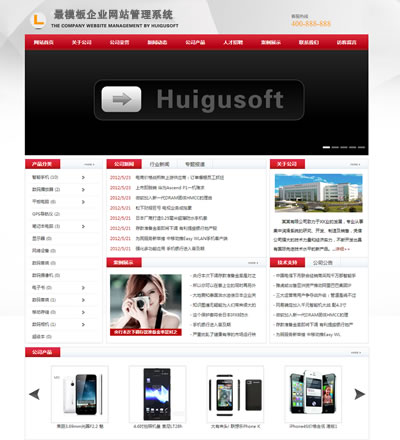先看一些现象吧:用eclipse或者Android studio,新建一个Activity自动生成的布局文件都是RelativeLayout,或许你会认为这是IDE的默认设置问题,其实不然,这是由 android-sdk\tools\templates\activities\BlankActivity\root\res\layout\activity_simple.xml.ftl 这个文件事先就定好了的,也就是说这是Google的选择,而非IDE的选择。那SDK为什么会默认给开发者新建一个默认的RelativeLayout布局呢?当然是因为RelativeLayout的性能更优,性能至上嘛。但是我们再看看默认新建的这个RelativeLayout的父容器,也就是当前窗口的顶级View——DecorView,它却是个垂直方向的LinearLayout,上面是标题栏,下面是内容栏。那么问题来了,Google为什么给开发者默认新建了个RelativeLayout,而自己却偷偷用了个LinearLayout,到底谁的性能更高,开发者该怎么选择呢? View的一些基本工作原理先通过几个问题,简单的了解写android中View的工作原理吧。 View是什么?简单来说,View是Android系统在屏幕上的视觉呈现,也就是说你在手机屏幕上看到的东西都是View。 View是怎么绘制出来的?View的绘制流程是从ViewRoot的performTraversals()方法开始,依次经过measure(),layout()和draw()三个过程才最终将一个View绘制出来。 View是怎么呈现在界面上的?Android中的视图都是通过Window来呈现的,不管Activity、Dialog还是Toast它们都有一个Window,然后通过WindowManager来管理View。Window和顶级View——DecorView的通信是依赖ViewRoot完成的。 View和ViewGroup什么区别?不管简单的Button和TextView还是复杂的RelativeLayout和ListView,他们的共同基类都是View。所以说,View是一种界面层控件的抽象,他代表了一个控件。那ViewGroup是什么东西,它可以被翻译成控件组,即一组View。ViewGroup也是继承View,这就意味着View本身可以是单个控件,也可以是多个控件组成的控件组。根据这个理论,Button显然是个View,而RelativeLayout不但是一个View还可以是一个ViewGroup,而ViewGroup内部是可以有子View的,这个子View同样也可能是ViewGroup,以此类推。 RelativeLayout和LinearLayout性能PK
基于以上原理和大背景,我们要探讨的性能问题,说的简单明了一点就是:当RelativeLayout和LinearLayout分别作为ViewGroup,表达相同布局时绘制在屏幕上时谁更快一点。上面已经简单说了View的绘制,从ViewRoot的performTraversals()方法开始依次调用perfromMeasure、performLayout和performDraw这三个方法。这三个方法分别完成顶级View的measure、layout和draw三大流程,其中perfromMeasure会调用measure,measure又会调用onMeasure,在onMeasure方法中则会对所有子元素进行measure,这个时候measure流程就从父容器传递到子元素中了,这样就完成了一次measure过程,接着子元素会重复父容器的measure,如此反复就完成了整个View树的遍历。同理,performLayout和performDraw也分别完成perfromMeasure类似的流程。通过这三大流程,分别遍历整棵View树,就实现了Measure,Layout,Draw这一过程,View就绘制出来了。那么我们就分别来追踪下RelativeLayout和LinearLayout这三大流程的执行耗时。 
31713556B8907738423903D70A5031AA.jpg
LinearLayout
Measure:0.738ms RelativeLayout
Measure:2.280ms Measure都干什么了RelativeLayout的onMeasure()方法
View[] views = mSortedHorizontalChildren;
int count = views.length;
for (int i = 0; i < count; i++) {
View child = views[i];
if (child.getVisibility() != GONE) {
LayoutParams params = (LayoutParams) child.getLayoutParams();
int[] rules = params.getRules(layoutDirection);
applyHorizontalSizeRules(params, myWidth, rules);
measureChildHorizontal(child, params, myWidth, myHeight);
if (positionChildHorizontal(child, params, myWidth, isWrapContentWidth)) {
offsetHorizontalAxis = true;
}
}
}
views = mSortedVerticalChildren;
count = views.length;
final int targetSdkVersion = getContext().getApplicationInfo().targetSdkVersion;
for (int i = 0; i < count; i++) {
View child = views[i];
if (child.getVisibility() != GONE) {
LayoutParams params = (LayoutParams) child.getLayoutParams();
applyVerticalSizeRules(params, myHeight);
measureChild(child, params, myWidth, myHeight);
if (positionChildVertical(child, params, myHeight, isWrapContentHeight)) {
offsetVerticalAxis = true;
}
if (isWrapContentWidth) {
if (isLayoutRtl()) {
if (targetSdkVersion < Build.VERSION_CODES.KITKAT) {
width = Math.max(width, myWidth - params.mLeft);
} else {
width = Math.max(width, myWidth - params.mLeft - params.leftMargin);
}
} else {
if (targetSdkVersion < Build.VERSION_CODES.KITKAT) {
width = Math.max(width, params.mRight);
} else {
width = Math.max(width, params.mRight + params.rightMargin);
}
}
}
if (isWrapContentHeight) {
if (targetSdkVersion < Build.VERSION_CODES.KITKAT) {
height = Math.max(height, params.mBottom);
} else {
height = Math.max(height, params.mBottom + params.bottomMargin);
}
}
if (child != ignore || verticalGravity) {
left = Math.min(left, params.mLeft - params.leftMargin);
top = Math.min(top, params.mTop - params.topMargin);
}
if (child != ignore || horizontalGravity) {
right = Math.max(right, params.mRight + params.rightMargin);
bottom = Math.max(bottom, params.mBottom + params.bottomMargin);
}
}
}
根据源码我们发现RelativeLayout会对子View做两次measure。这是为什么呢?首先RelativeLayout中子View的排列方式是基于彼此的依赖关系,而这个依赖关系可能和布局中View的顺序并不相同,在确定每个子View的位置的时候,就需要先给所有的子View排序一下。又因为RelativeLayout允许A,B 2个子View,横向上B依赖A,纵向上A依赖B。所以需要横向纵向分别进行一次排序测量。 LinearLayout的onMeasure()方法
@Override
protected void onMeasure(int widthMeasureSpec, int heightMeasureSpec) {
if (mOrientation == VERTICAL) {
measureVertical(widthMeasureSpec, heightMeasureSpec);
} else {
measureHorizontal(widthMeasureSpec, heightMeasureSpec);
}
}
与RelativeLayout相比LinearLayout的measure就简单明了的多了,先判断线性规则,然后执行对应方向上的测量。随便看一个吧。
for (int i = 0; i < count; ++i) {
final View child = getVirtualChildAt(i);
if (child == null) {
mTotalLength += measureNullChild(i);
continue;
}
if (child.getVisibility() == View.GONE) {
i += getChildrenSkipCount(child, i);
continue;
}
if (hasDividerBeforeChildAt(i)) {
mTotalLength += mDividerHeight;
}
LinearLayout.LayoutParams lp = (LinearLayout.LayoutParams) child.getLayoutParams();
totalWeight += lp.weight;
if (heightMode == MeasureSpec.EXACTLY && lp.height == 0 && lp.weight > 0) {
// Optimization: don't bother measuring children who are going to use
// leftover space. These views will get measured again down below if
// there is any leftover space.
final int totalLength = mTotalLength;
mTotalLength = Math.max(totalLength, totalLength + lp.topMargin + lp.bottomMargin);
} else {
int oldHeight = Integer.MIN_VALUE;
if (lp.height == 0 && lp.weight > 0) {
// heightMode is either UNSPECIFIED or AT_MOST, and this
// child wanted to stretch to fill available space.
// Translate that to WRAP_CONTENT so that it does not end up
// with a height of 0
oldHeight = 0;
lp.height = LayoutParams.WRAP_CONTENT;
}
// Determine how big this child would like to be. If this or
// previous children have given a weight, then we allow it to
// use all available space (and we will shrink things later
// if needed).
measureChildBeforeLayout(
child, i, widthMeasureSpec, 0, heightMeasureSpec,
totalWeight == 0 ? mTotalLength : 0);
if (oldHeight != Integer.MIN_VALUE) {
lp.height = oldHeight;
}
final int childHeight = child.getMeasuredHeight();
final int totalLength = mTotalLength;
mTotalLength = Math.max(totalLength, totalLength + childHeight + lp.topMargin +
lp.bottomMargin + getNextLocationOffset(child));
if (useLargestChild) {
largestChildHeight = Math.max(childHeight, largestChildHeight);
}
}
父视图在对子视图进行measure操作的过程中,使用变量mTotalLength保存已经measure过的child所占用的高度,该变量刚开始时是0。在for循环中调用measureChildBeforeLayout()对每一个child进行测量,该函数实际上仅仅是调用了measureChildWithMargins(),在调用该方法时,使用了两个参数。其中一个是heightMeasureSpec,该参数为LinearLayout本身的measureSpec;另一个参数就是mTotalLength,代表该LinearLayout已经被其子视图所占用的高度。 每次for循环对child测量完毕后,调用child.getMeasuredHeight()获取该子视图最终的高度,并将这个高度添加到mTotalLength中。在本步骤中,暂时避开了lp.weight>0的子视图,即暂时先不测量这些子视图,因为后面将把父视图剩余的高度按照weight值的大小平均分配给相应的子视图。源码中使用了一个局部变量totalWeight累计所有子视图的weight值。处理lp.weight>0的情况需要注意,如果变量heightMode是EXACTLY,那么,当其他子视图占满父视图的高度后,weight>0的子视图可能分配不到布局空间,从而不被显示,只有当heightMode是AT_MOST或者UNSPECIFIED时,weight>0的视图才能优先获得布局高度。最后我们的结论是:如果不使用weight属性,LinearLayout会在当前方向上进行一次measure的过程,如果使用weight属性,LinearLayout会避开设置过weight属性的view做第一次measure,完了再对设置过weight属性的view做第二次measure。由此可见,weight属性对性能是有影响的,而且本身有大坑,请注意避让。 小结从源码中我们似乎能看出,我们先前的测试结果中RelativeLayout不如LinearLayout快的根本原因是RelativeLayout需要对其子View进行两次measure过程。而LinearLayout则只需一次measure过程,所以显然会快于RelativeLayout,但是如果LinearLayout中有weight属性,则也需要进行两次measure,但即便如此,应该仍然会比RelativeLayout的情况好一点。 RelativeLayout另一个性能问题对比到这里就结束了嘛?显然没有!我们再看看View的Measure()方法都干了些什么?
public final void measure(int widthMeasureSpec, int heightMeasureSpec) {
if ((mPrivateFlags & PFLAG_FORCE_LAYOUT) == PFLAG_FORCE_LAYOUT ||
widthMeasureSpec != mOldWidthMeasureSpec ||
heightMeasureSpec != mOldHeightMeasureSpec) {
......
}
mOldWidthMeasureSpec = widthMeasureSpec;
mOldHeightMeasureSpec = heightMeasureSpec;
mMeasureCache.put(key, ((long) mMeasuredWidth) << 32 |
(long) mMeasuredHeight & 0xffffffffL); // suppress sign extension
}
View的measure方法里对绘制过程做了一个优化,如果我们或者我们的子View没有要求强制刷新,而父View给子View的传入值也没有变化(也就是说子View的位置没变化),就不会做无谓的measure。但是上面已经说了RelativeLayout要做两次measure,而在做横向的测量时,纵向的测量结果尚未完成,只好暂时使用myHeight传入子View系统,假如子View的Height不等于(设置了margin)myHeight的高度,那么measure中上面代码所做得优化将不起作用,这一过程将进一步影响RelativeLayout的绘制性能。而LinearLayout则无这方面的担忧。解决这个问题也很好办,如果可以,尽量使用padding代替margin。 结论
1.RelativeLayout会让子View调用2次onMeasure,LinearLayout 在有weight时,也会调用子View2次onMeasure |
Android中RelativeLayout和LinearLayout性能分析
时间:2016-02-05 19:40来源:未知 作者:最模板 点击:次
先看一些现象吧:用eclipse或者Android studio,新建一个Activity自动生成的布局文件都是RelativeLayout,或许你会认为这是IDE的默认设置问题,其实不然,这是由 android-sdk\tools\templates\activitie
顶一下
(1)
100%
踩一下
(0)
0%
------分隔线----------------------------
- 热点内容
-
- Android 各版本对HTTPS支持一览
Android 支持https相关问题 1,android 的WebView 支持Https,但是是由一个...
- Android优雅地发起网络Request与接收
Android发起网络Request与接收Response以下几种写法很常见: 1、直接...
- ANDROID SHAPE 画圆形背景实现圆形 T
shape可以绘制矩形环形以及椭圆、所以只需要用椭圆就可以完成...
- Android键盘处理-监听键盘状态并实现
在做一些人性化的交互设计的时候,能够获取Android 键盘的显示...
- android自定义控件属性TypedArray及at
android 自定义控件属性,学到了TypedArray以及attrs。讲一下流程吧...
- Android 各版本对HTTPS支持一览
- 随机模板
-
-
 Varmo英文综合商品商城Ma
人气:134
Varmo英文综合商品商城Ma
人气:134
-
 大气经典红色全静态企业
人气:455
大气经典红色全静态企业
人气:455
-
 zencart手机数码模板
人气:2065
zencart手机数码模板
人气:2065
-
 ecshop仿美丽说网带手机版
人气:493
ecshop仿美丽说网带手机版
人气:493
-
 shopex仿普派商城模板
人气:757
shopex仿普派商城模板
人气:757
-
 shopex时尚起义服装模板
人气:562
shopex时尚起义服装模板
人气:562
-
